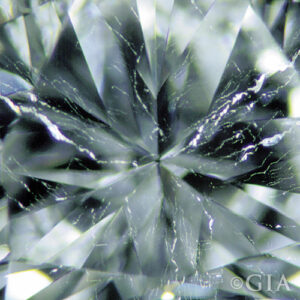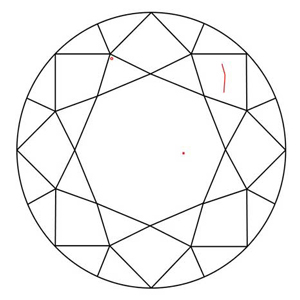Diamond Inclusions
Posted on Wednesday, June 16th, 2021
in Diamond.
Like a fingerprint, every diamond is unique. One of the main contributing factors to a diamond’s individuality is its inclusions. An inclusion is an internal characteristic that is created during the formation stage of a diamond. They tell a story of the diamond’s journey from about 100 miles beneath the earth to its surface. Inclusions help gemologists separate natural diamonds from synthetic ones and are evaluated (along with any external blemishes) to determine the clarity grade of a particular diamond. Gemologists assess the number, size, relief, nature, and position of these inclusions and assign one of the following eleven clarity grades to a diamond:
- Flawless (FL): No inclusions and no blemishes visible under 10x magnification
- Internally Flawless (IF): No inclusions visible under 10x magnification
- Very, Very Slightly Included(VVS1 and VVS2): Inclusions so slight they are difficult for a skilled grader to see under 10x magnification
- Very Slightly Included (VS1and VS2): Inclusions are observed with effort under 10x magnification, but can be characterized as minor
- Slightly Included (SI1and SI2): Inclusions are noticeable under 10x magnification
- Included (I1, I2, and I3): Inclusions are obvious under 10x magnification which may affect transparency and brilliance
A diamond’s inclusions and clarity grade help determine the value of a diamond. Typically, the fewer inclusions a diamond contains, the more valuable that diamond will be. Almost all diamonds contain inclusions. It’s extremely rare to find a flawless diamond completely free of inclusions. However, it’s important to note that even though most diamonds contain inclusions, there’s a good chance that these inclusions cannot be seen without a microscope. You likely won’t be able to tell the difference between a VS and SI diamond by just looking at it without the assistance of a microscope. Because of that, some diamond buyers feel more confident about selecting a diamond with a lower clarity grade instead of compromising on a different quality factor, like diamond cut or carat weight.
Inclusions come in all shapes and sizes. That’s why no two diamonds are exactly alike. Some of the most common varieties of diamond inclusions include:
- Feather: An often white and feathery break in a gemstone
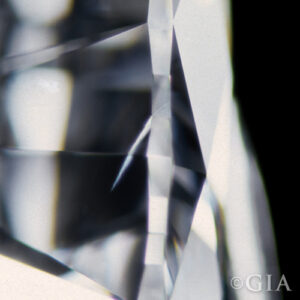
- Crystal: A mineral crystal located within a diamond
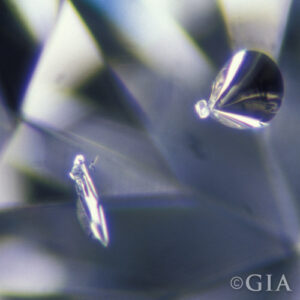
- Cloud: A shallow opening typically located at the girdle edge, facet junction, or culet that is caused by damage to the diamond’s surface
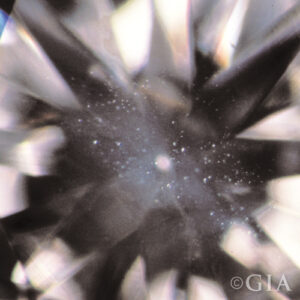
- Needle: A thin, elongated crystal that looks like a tiny rod
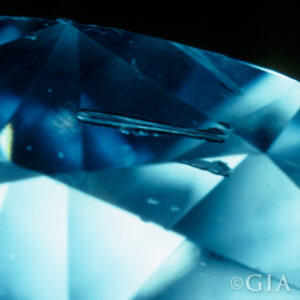
- Pinpoint: A very small crystal that looks like a tiny dot
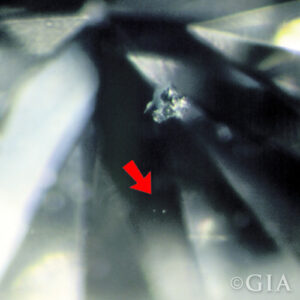
- Knot: A white or transparent diamond crystal that extends to the surface after fashioning
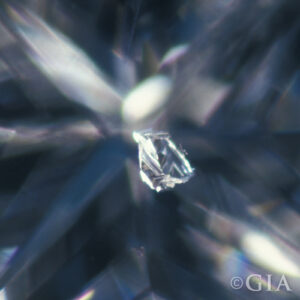
- Grain Center: A small white or dark concentrated area of crystal distortion that might have a thread-like or pinpoint-like appearance
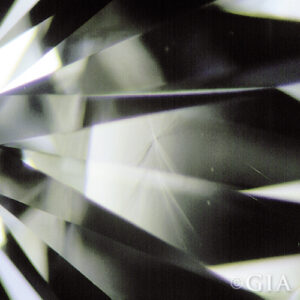
- Bruise: A tiny area of impact accompanied by very small, root-like feathers that typically occur at the facet junction
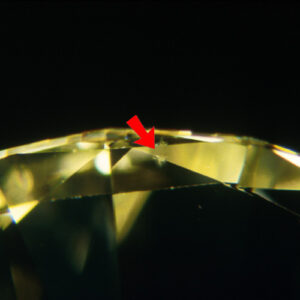
- Bearded Girdle: Very small feathers that extend from the girdle surface into the stone
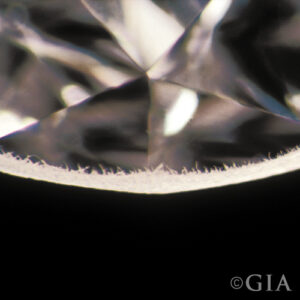
- Indented Natural: A portion of the diamond’s original surface that dips below a polished diamond’s surface
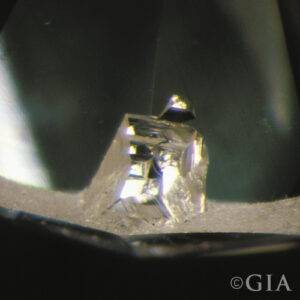
- Internal Graining: Lines, angles, or curves that might appear white, colored, or reflective and are caused by irregularities in crystal growth
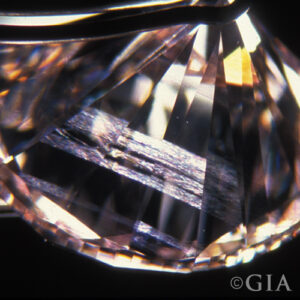
- Internal Laser Drilling: A surface-reaching feather caused by a process used to diminish the visibility of an inclusion
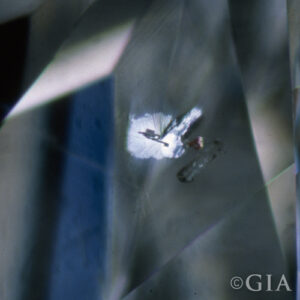
- Laser Drill Hole: A tiny, surface-reaching tunnel produced by a laser light beam
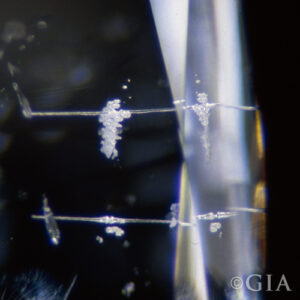
- Twinning Wisp: A series of pinpoints, clouds, or crystals that form in a diamond’s growth place
